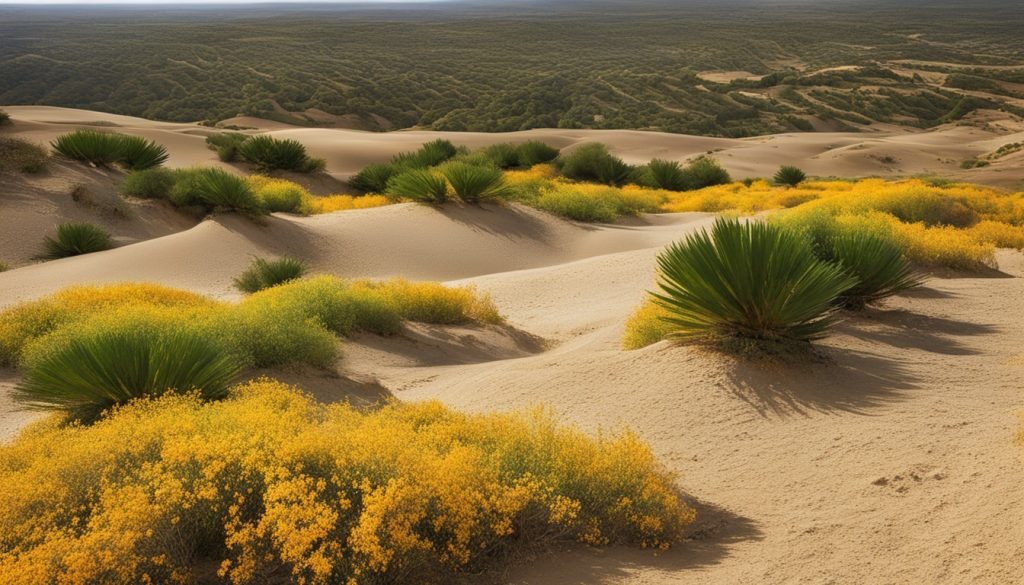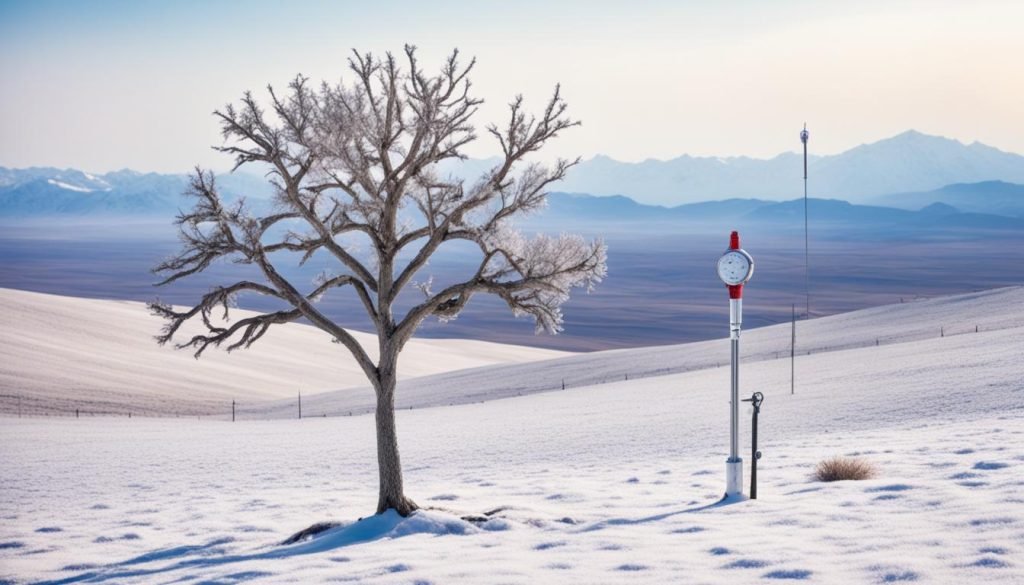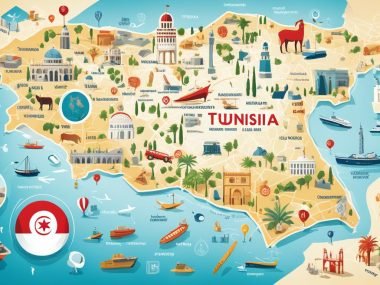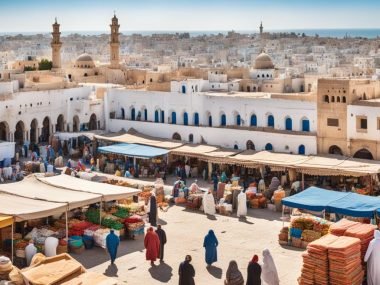Tunisia, nestled on the North African coast, displays a wide climate range. Its northern regions enjoy a Mediterranean climate with mild, wet winters and very hot, dry summers. Moving south, the climate becomes semi-arid and eventually, the Sahara Desert’s arid conditions take over. This shift from lush north to desert south highlights a drastic change in both scenery and temperature.
The country’s geography plays a big role in its weather. The northern mountains get cooler and wetter conditions compared to the central plains, which are drier. This leads to significant temperature differences across the regions. In winter, some areas can even drop below freezing, whereas, in the summer, temperatures might reach about 50°C. Such extreme contrasts are fascinating.
Key Takeaways
- The northern region enjoys a Mediterranean climate with mild, rainy winters and hot, dry summers.
- The southern part transitions into semiarid and desert conditions, merging with the Sahara.
- Geographical features heavily influence Tunisia’s weather patterns.
- Temperature variations are vast, ranging from below 0°C in winter to nearly 50°C in summer.
- Topographical diversity contributes to the wide range of climatic conditions across the country.
- Certain areas of Tunisia experience substantial temperature differences due to varied geography.
Tunisian Climate Overview
Tunisia’s climate varies greatly due to its geography. The country stretches from north to south, creating different weather patterns. This makes the climate both interesting and complex.

Geographical Influences on Climate
In the north, sea winds from the Mediterranean cool the air and bring more rain. But in the south, the hot Chergui winds raise temperatures, leading to clear and dry conditions. The landscape, from low salt lakes to high Jebel ech Chambi, also affects the weather. These changes highlight the country’s climatic diversity.
Diverse Climatic Zones
Tunisia is divided into seven different climate zones. The north enjoys a Mediterranean climate, with mild winters and hot, dry summers. Moving south, you enter the Sahara’s hot desert climate. This sharp difference shows Tunisia’s varied climates. The country’s weather and rich ecosystems are closely linked.
Winter Weather in Tunisia
Tunisia’s winter weather varies by region. Coastal areas usually have mild temperatures and some rain. In contrast, inland and highland areas face colder weather.
Average Winter Temperatures
During winter, coastal Tunisia sees temperatures between 12°C and 18°C. There’s often sun mixed with rain, making the winter nice. Further inland, it gets notably colder, especially towards the north-western highlands.
Regional Variations in Winter Weather
Winter temperature differences across Tunisia are stark. The northwest mountains sometimes get snow in the cold months. These parts can be much colder than the coasts. Meanwhile, the southern desert is warmer by day but temperatures can drop below freezing at night. This shows the wide range of Tunisia’s winter weather.
| Region | Average Temperature (°C) | Notable Weather Patterns |
|---|---|---|
| Coastal Areas | 12-18 | Mild temperatures, occasional rainfall |
| Northwest Highlands | 5-10 | Possible snowfall, colder climate |
| Southern Desert | 5-20 | Daytime warmth, freezing nights |
How Cold Does Tunisia Get?
Tunisia’s weather is a mix of extremes during the year. Some regions have very low temperatures, unexpected in North Africa. This shows the unique weather patterns of the country.

Lowest Recorded Temperatures
In Thala, temperatures once reached -15°C, setting a record. This cold is a big change from the hot weather elsewhere. Tunisia’s highlands can get frosty, showing the country’s weather diversity. The mountains in the north and northwest often feel this chill.
Impact of Cold Fronts and Winds
Cold fronts greatly affect Tunisia’s weather. They can cause sudden cold spells and brisk winds across the area. The north’s Mediterranean winds bring cooler, wetter weather. But, the Sahara’s hot Chergui winds make it warmer and drier. These winds explain Tunisia’s complex climate.
| Region | Lowest Temperature | Wind Influence |
|---|---|---|
| Thala | -15°C | Mountain Winds |
| El Borma | 54°C (High) | Chergui Winds |
| Coastal Areas | 12–18°C | Sea Winds |
Tunisia’s Temperature Range
Tunisia’s temperature varies greatly from north to south. The country’s diverse landscapes significantly affect its weather patterns. This makes Tunisia a place of stark climatic contrasts.
North vs. South Temperature Differences
In the North, along the coast, temperatures stay moderate, reflecting a Mediterranean climate. Go south, and it gets much hotter, especially in the desert areas. The North sees summer temperatures around 30°C. However, the South can exceed 40°C, making it intensely hot.
Historical Temperature Extremes
Tunisia has experienced some extreme weather over the years. Thala in the North once hit -15°C. Meanwhile, El Borma in the South soared to 54°C. These records highlight Tunisia’s wide range of temperatures, from freezing winters to scorching summers.
Conclusion
Tunisia’s climate has a wide range of weather due to its geography. In the north, you’ll find temperate rains and cool winters. But in the Saharan south, it gets really hot. This makes understanding Tunisia’s weather patterns important for farming, tourism, and city planning.
The need for climate adaptation in Tunisia has grown with global warming. The country’s diverse weather has influenced its nature, how people live, and their work. This variety means farmers must change their crops and methods to suit both rainy and dry seasons.
Knowing the best time to visit Tunisia depends on these weather patterns. The cooler months are great for visiting the north and coast. Yet, the Sahara offers stunning views that are worth the extreme heat, with proper planning. Tunisia’s climate makes it an intriguing place for both travel and research, with its weather playing a key role.







